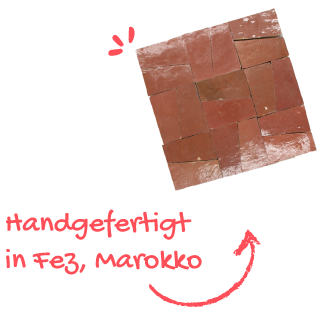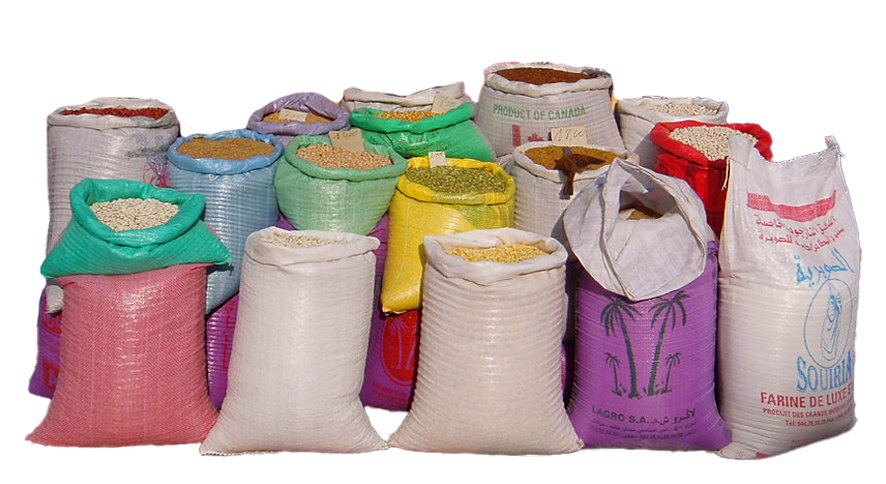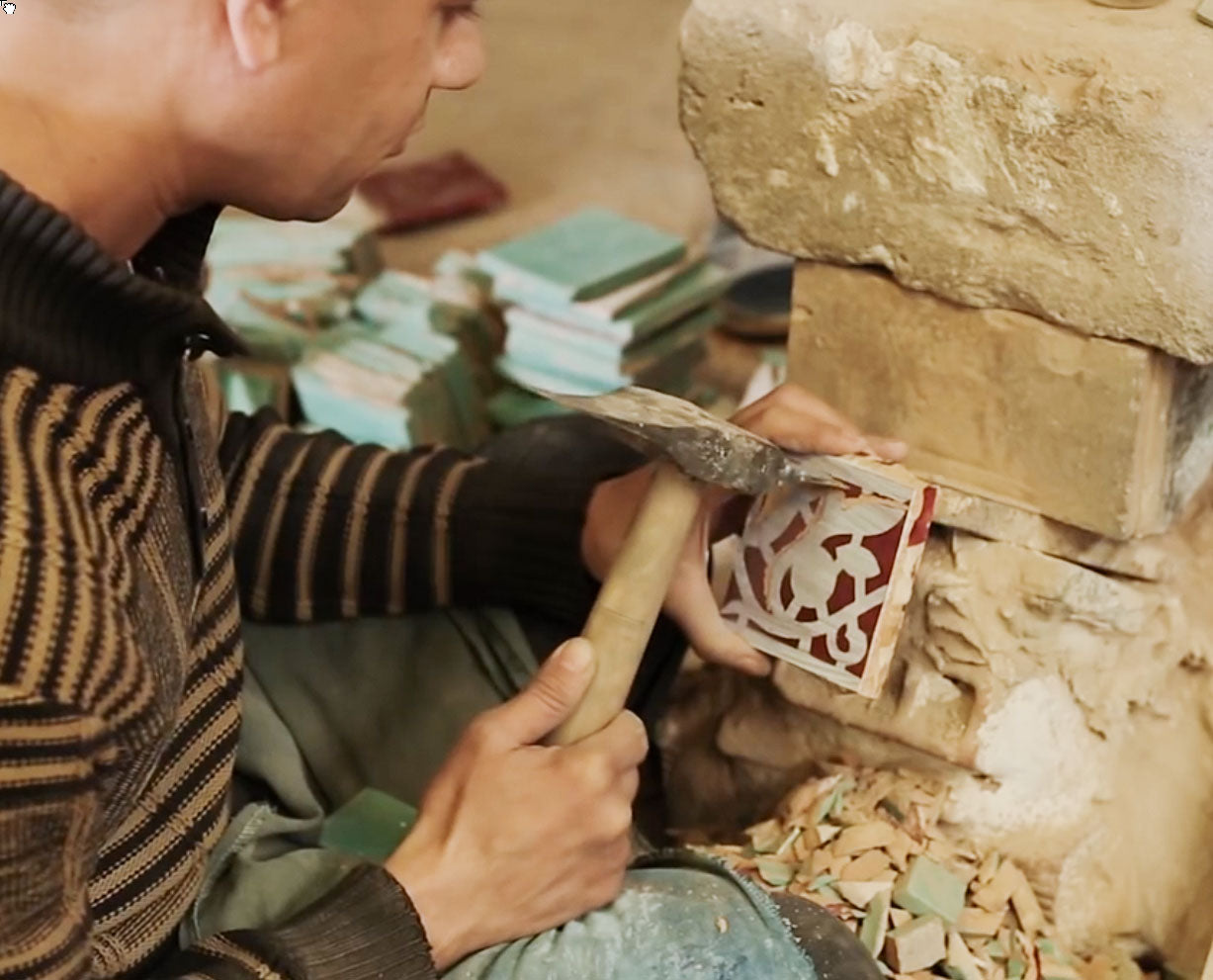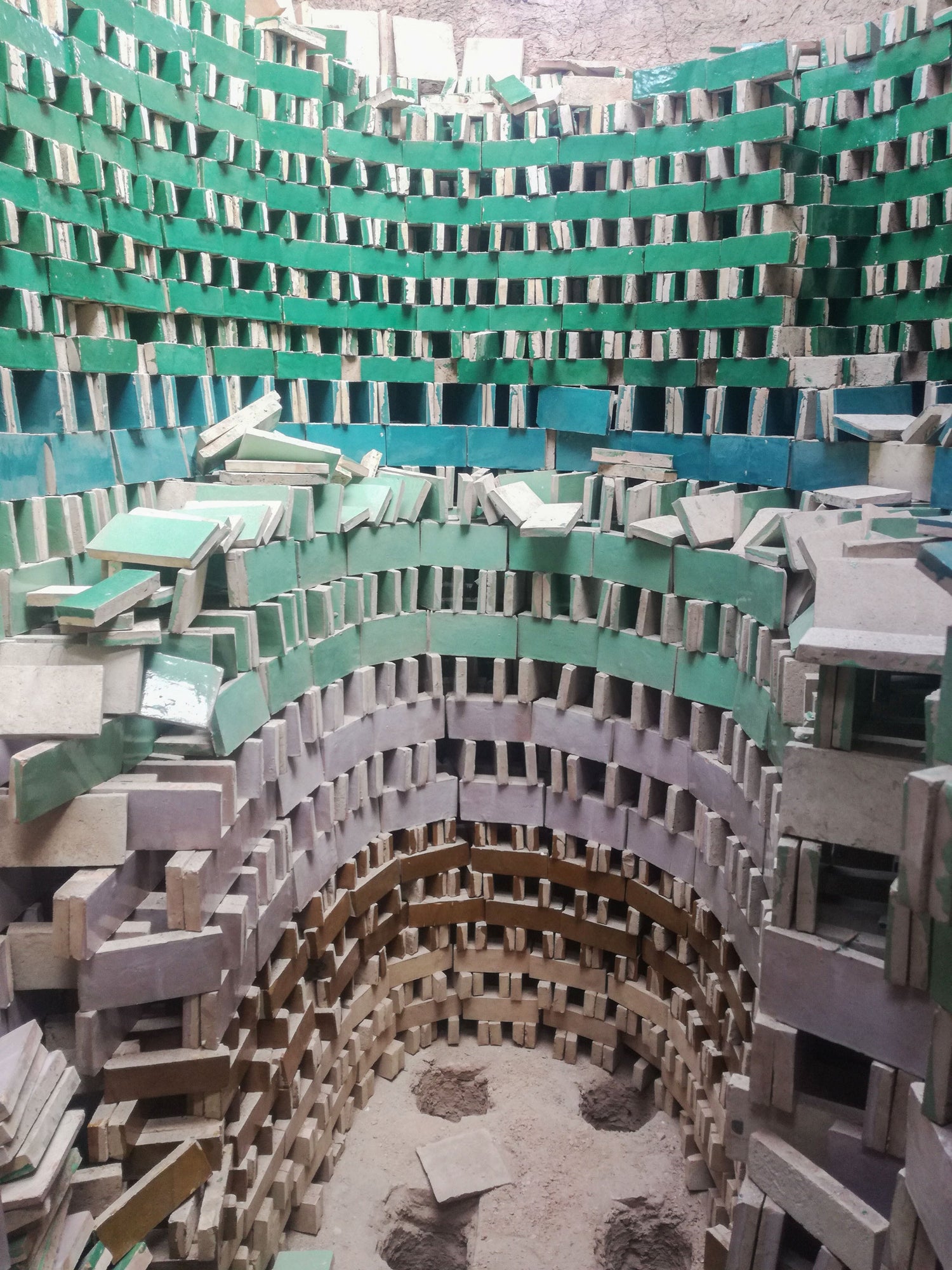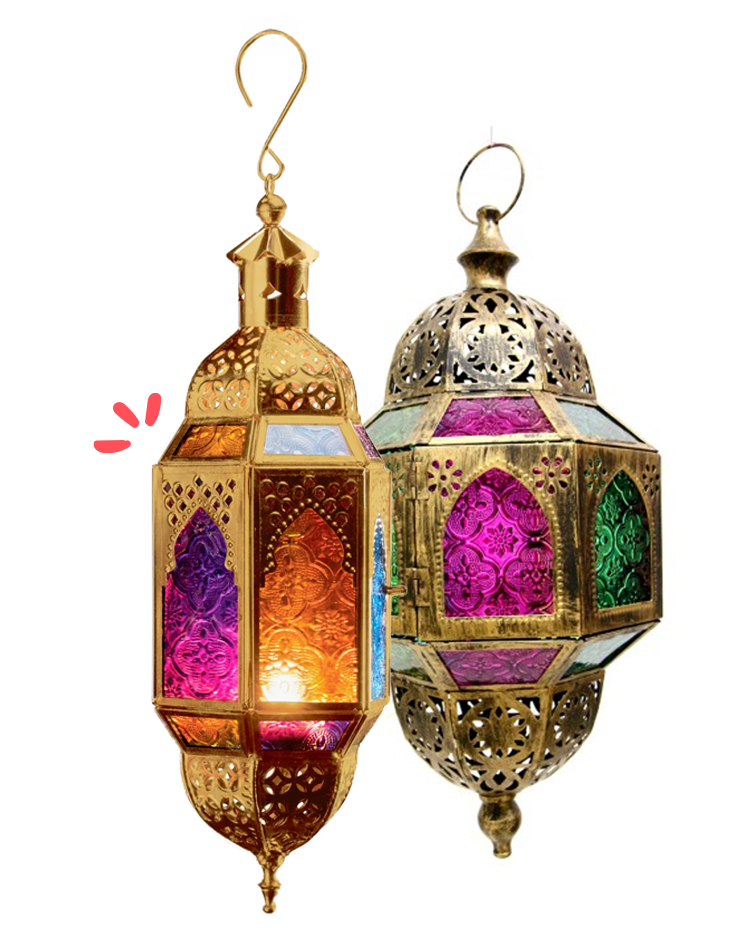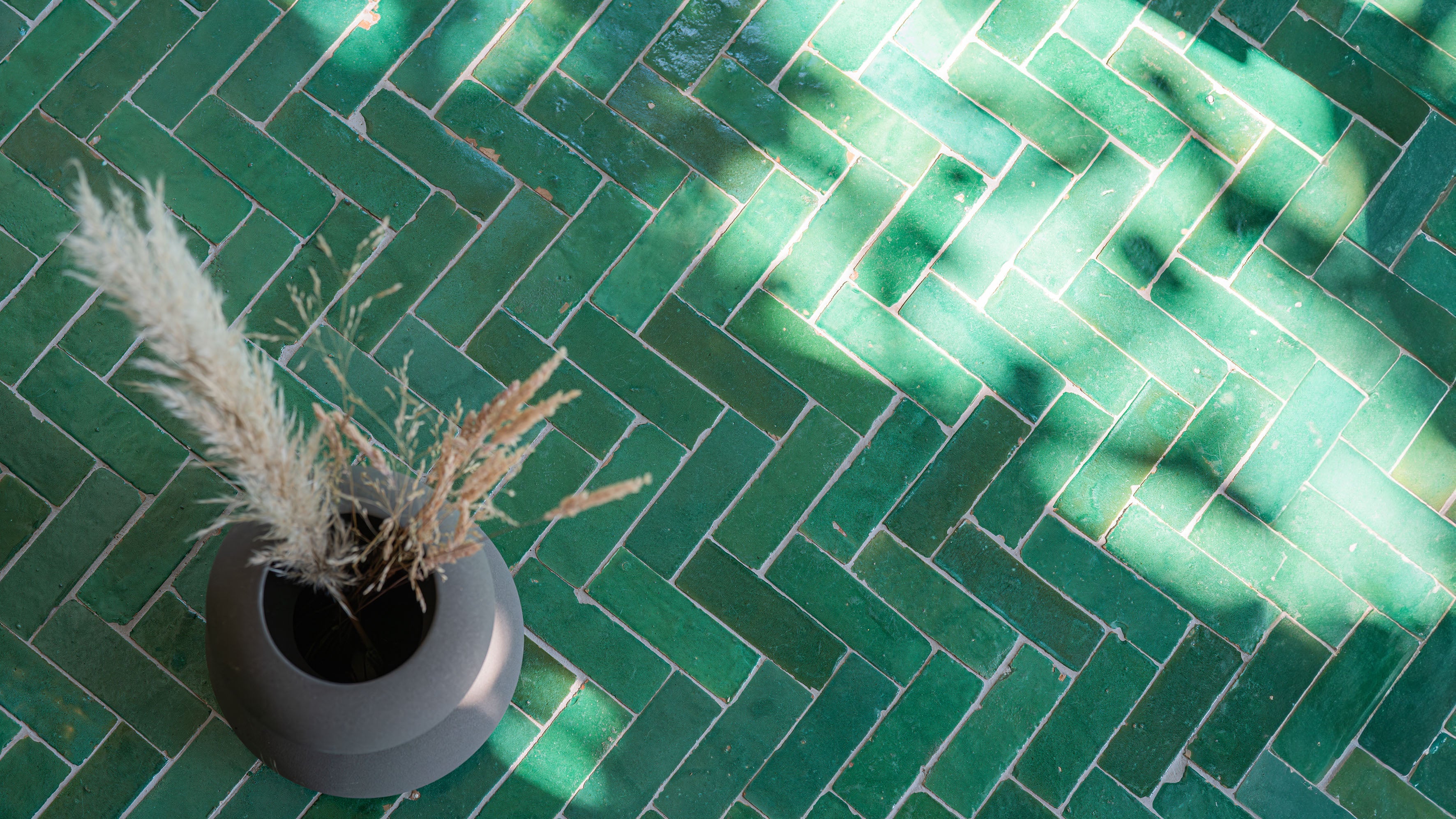Inspiration Gallery
Transfer and treatment
To the instructional videos
Inspiration Guide
Introduction to Moroccan tiles
-
Are you looking for a unique tile to give your interior a special look? Then discover the versatile Moroccan tiles. These tiles are characterized by their unique shapes, vibrant colors, and their wide applicability in any room. There are several different types of Moroccan tiles to choose from. This includes the Zellige, a wall tile recognizable by its slightly cut corners.
-
The Bejmat, a tile that looks like a brick, is often used on the floors of Moroccan riads. There's also the Platta, a floor tile available in various shapes. Let your creativity run wild and create your own color combinations. Whether you choose light tones, dark colors, a rich burst of color, or a natural look, Moroccan tiles will give your home exactly the atmosphere you desire.
History of Moroccan tiles
-
Moroccan tiles, often referred to as zelliges, have a long history dating back to the 10th century. As one of the most iconic art forms of the Islamic world, these tiles are an important cultural symbol of Morocco. The art of glazed tile making was introduced to North Africa during the Arab conquests in the 7th and 8th centuries and flourished further under the influence of Andalusian artisans. The zellige technique developed particularly during the Almoravid and Almohad reigns in the 11th century, with Fez being the center of production thanks to the local clay and craftsmanship. Zellige are made from carefully shaped and fired clay.
-
which mostly comes from the Fes region. Originally, the tiles were glazed in natural tones, but from the 14th century onwards, more vibrant colours such as blue, green and yellow became popular. The geometric patterns reflect Islamic traditions and are often based on complex mathematical principles. From Morocco, zellige art spread to Andalusia, with the Alhambra in Granada being a famous example. Today, Moroccan
Tiles are popular worldwide and are used in both traditional and modern designs, making them a timeless example of the interplay of tradition and innovation.
Origin and quality
-
Our Platta, Zelliges, and Bejmat tiles come from Fez, Morocco. This type of tile is produced nowhere else in the world and is a typically Moroccan product. Platta, Zelliges (pronounced: zelliezjes), and Bejmat (pronounced: bezjmat) tiles are made from a clay found almost exclusively in the caves of the city of Fez. Large discs are rolled from this clay, from which the shapes of the tiles are cut. These are dried in the sun and later fired and glazed in an olive pit kiln. This centuries-old manufacturing process is carried out entirely by hand. Only simple tools are required to create a finished product.
-
After firing, the tiles are cut by hand into any desired shape. This hand-cutting process creates a distinctive appearance that immediately lends these tiles their charm. Zelliges are one of the few tile types that are laid without joints; only the remaining joints are grouted. Moroccan wall tiles are popular in Islamic countries, where they are used in graphic mosaics. In recent years, they have also become common in Western Europe. Zelliges and Bejmat tiles are popular for their irregular, vibrant appearance and beautiful color nuances, thus giving them their handmade character.
-
factories
Zelliges is often processed and sold by various factories, but only a few actually make these tiles from clay. Designtegels.nl BV works with one of the largest manufacturers in Fez, Morocco, and has had positive experiences with them. We travel to Morocco regularly and know most of the manufacturers personally. The biggest challenge is color control; color variations can occur on repeat orders, so we always advise our customers to order sufficient tiles and allow for breakage and variations. Child labor is not found in these factories, although teenagers sometimes perform light work. The work is often monotonous and requires great precision, as small figures are precisely cut with hammer and anvil. The atmosphere in the workshops is pleasant, with regular breaks for mint tea and fresh fruit such as dates and figs. The employees take pride in their craft and enjoy showing off their work, creating intricate shapes from square tiles at breakneck speed. These artisans are highly respected and perform their specialized work with dedication.
-
Raw materials
Zelliges and Bejmat tiles are made of clay, water, and glaze. The clay comes from caves and is further processed in factories. The factories typically consist of a large outdoor area where the clay can dry properly, with an olive-pit kiln and a small storage area.
for the dried tiles. After drying, the clay tablets are glazed and then placed in an olive pit kiln. The tiles are stacked entirely by hand into the kiln, which is fired with wood and olive pits. This gives the tiles a slightly different color at the bottom of the kiln than at the top. After firing, the tiles are mixed and packed in jute sacks, ready for further processing. The clay is easily identifiable by the lime pits. These lime pits can also be found just beneath the surface of the glaze, which can lead to cracks in the glaze. These very bumps and cracks are what make Zelliges so recognizable and should be considered normal. The production process for Zelliges, Bejmat, and Platta is sustainable and does not contain any materials that are harmful to the environment, people, or animals.

